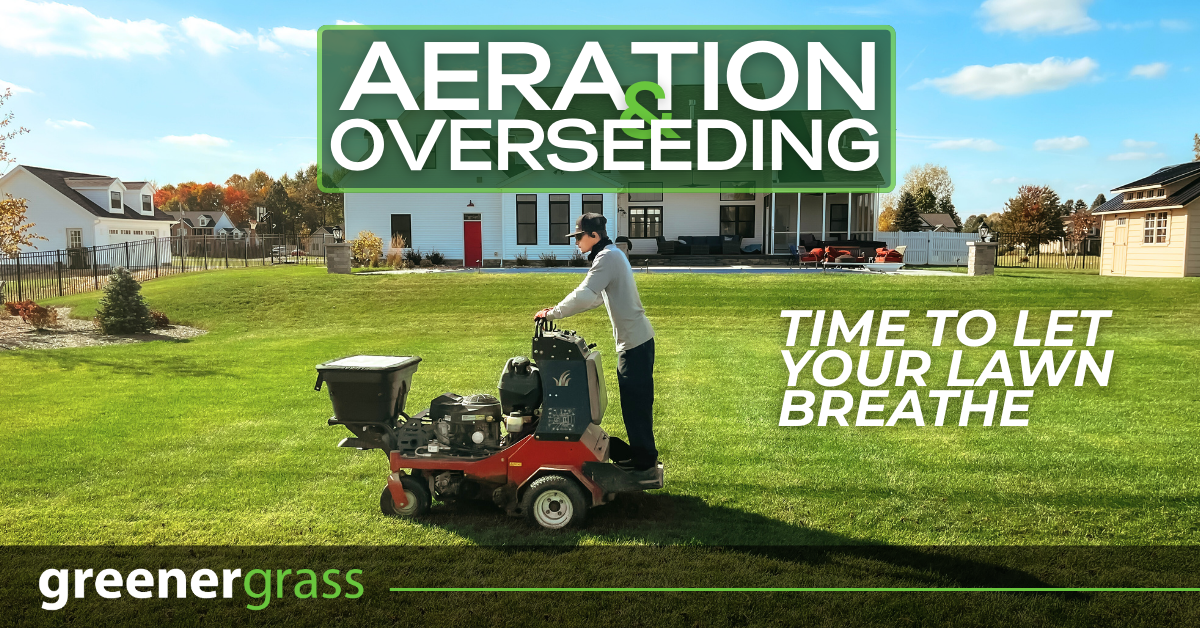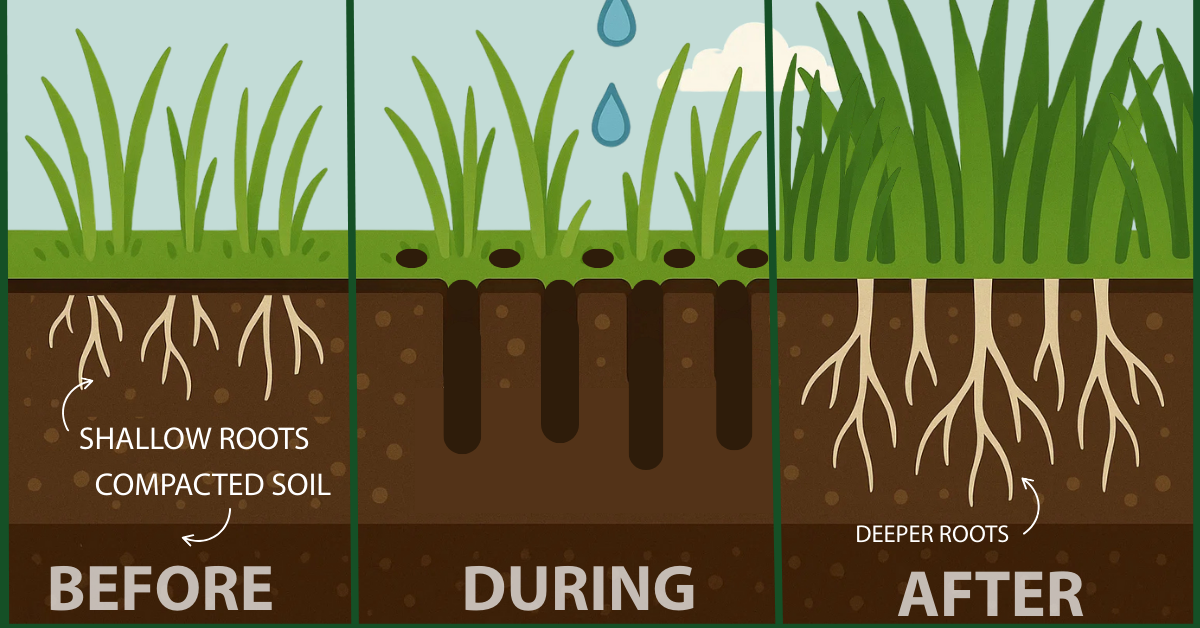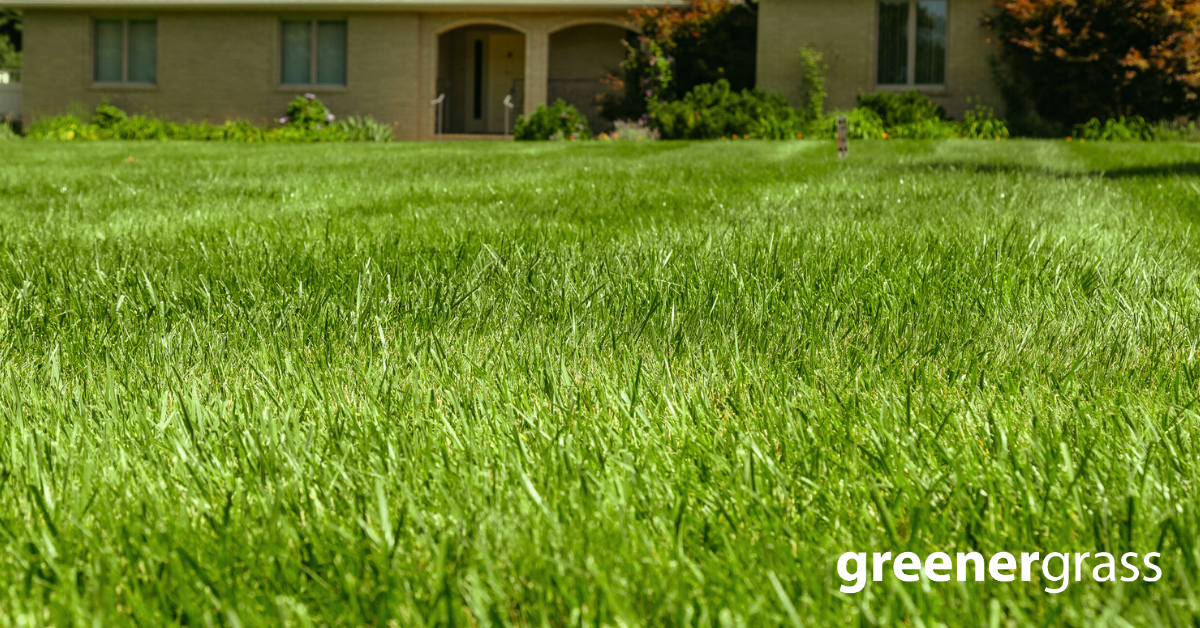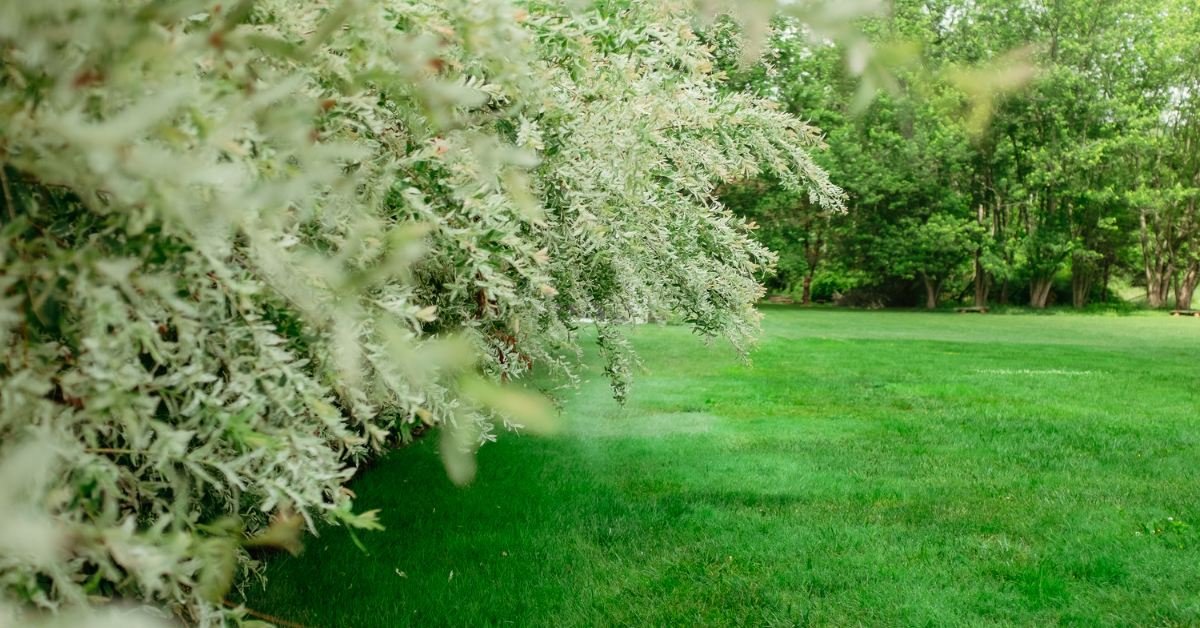The Science of Aeration & Overseeding: How to Rebound Your Lawn After Summer
By the time September rolls around in Northeast Ohio, your lawn has survived heatwaves, summer cookouts, kids, pets, and plenty of wear and tear. What looks like a simple patch of grass is actually a living system—and right now, that system is gasping for air.
Fall is the season to fix it. And two of the most powerful tools in lawn care—aeration and overseeding—work best when the science is on their side. Let’s break it down.

Why Soil Compaction Chokes Your Lawn
Think of your soil like a sponge. In spring, it’s fluffy and full of tiny air pockets. But after months of foot traffic, mower wheels, and summer rainstorms, that sponge gets squeezed tight.
Here’s what happens when soil compacts:
-
Roots can’t push deeper.
-
Water runs off instead of soaking in.
-
Nutrients sit at the surface instead of reaching the root zone.
The result? A lawn that looks tired, thin, and stressed out by September.
Aeration is the reset button. By pulling out little plugs of soil (core aeration), you punch thousands of tiny tunnels into your yard. These tunnels are like breathing straws for your roots—air, water, and nutrients can finally flow where they’re needed most.

The Secret of Seed-to-Soil Contact
Let’s be real: tossing seed on top of hard dirt is like tossing spaghetti at a wall. It’s not sticking.
For grass seed to germinate, it has to be tucked into the soil where it can absorb moisture and nutrients. Aeration creates the perfect seedbed—open spaces, loose soil, and just enough cover to keep seed safe from birds and wind.
When you follow aeration with overseeding, the two treatments work hand in hand:
-
Aeration makes the space.
-
Overseeding fills it with new growth.
That’s why lawns treated with both look noticeably thicker and greener by spring.

Fall is Nature’s Perfect Planting Window
You might be wondering: why not just wait until spring to seed? Here’s the science-backed truth:
-
Cool air + warm soil → Fall temperatures are mild, but the ground is still warm from summer. Seeds germinate faster in this sweet spot.
-
Less weed competition → Weeds like crabgrass die off in the fall, leaving room for your grass to thrive without a turf war.
-
Extra root time → Seed planted in September has months to grow roots before winter dormancy. Come spring, it wakes up ready to outcompete weeds and handle stress better.
In other words: fall planting is like giving your lawn a head start in the race to spring green-up.

Why DIY Usually Falls Short
Aeration and overseeding sound simple, but doing them right is a science:
-
Equipment: The machines that actually pull plugs of soil aren’t your average hardware store rentals—they’re heavy-duty tools designed for consistent depth and spacing.
-
Seed quality: Professional-grade seed is bred for local conditions, disease resistance, and color. Big-box seed blends? Not so much.
-
Timing: The window is short in Northeast Ohio. A few weeks too early or too late can make the difference between a lush spring lawn and wasted effort.
That’s why professional lawn services can deliver better results, faster.

Get Pricing and Get on Our Schedule
Bottom Line: Dormancy is natural. With a little patience and smart lawn care, your grass will bounce back. Knowing what type of turf you have—and how it handles stress—helps you make the right decisions for a thicker, greener, and healthier lawn.
